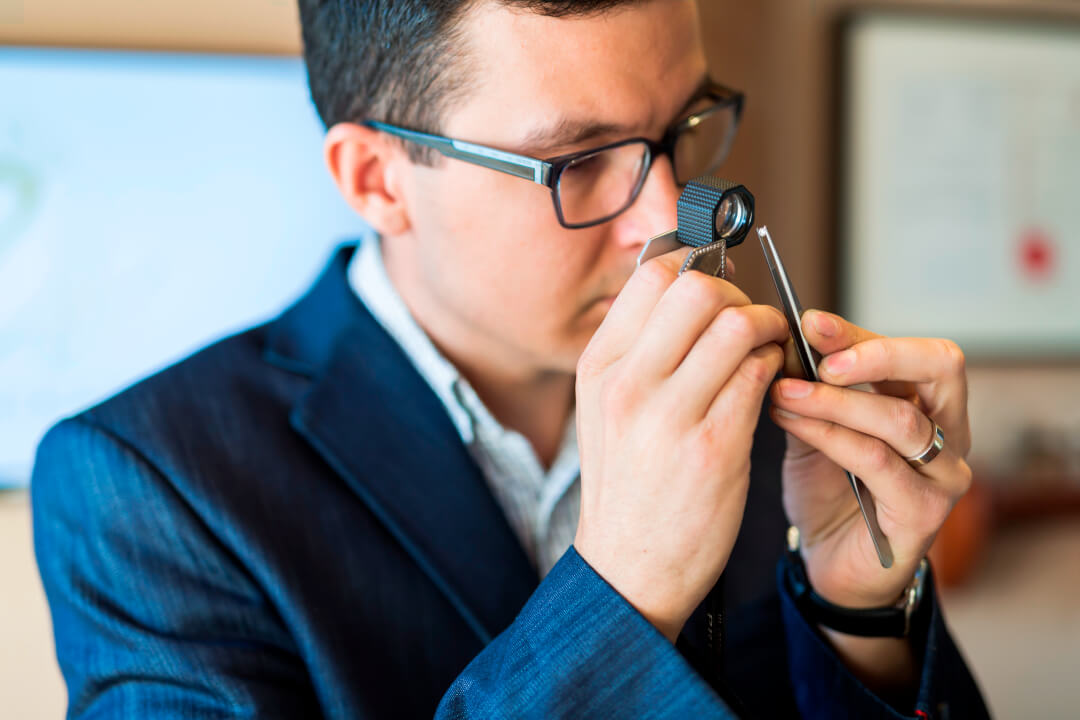A professional jeweler or gemologist cannot distinguish between a lab-created diamond and a natural diamond simply by looking at it.They will need to examine its inclusions under a microscope in order to determine how it was formed based on the differences between them.Furthermore, lab-grown diamond girdles frequently have their synthetic status and report numbers laser-etched into them during the fabrication process.Thus, a jeweler may be able to check for the presence of this as well.It is still required by law for manufacturers, jewelers, and vendors to report information about synthetic diamonds.
A traditional jeweler’s microscope or loupe can’t tell the difference between a lab-grown diamond and one mined naturally.Many jewelers utilize low-cost diamond testing tools to distinguish between fake diamonds (CZs, moissanite) and real diamonds.The tools used to analyze diamonds are rudimentary and do not provide accurate information about the type of diamond.
A diamond tester is a tool designed to distinguish fake diamonds from real diamonds based on their thermal conductivity or electrical properties.It is important to note that this method of testing cannot distinguish between mined diamonds and lab diamonds since lab grown diamonds are real and conduct heat and electricity in a similar manner to mined diamonds.Therefore, the diamond tester will display lab diamonds as genuine diamonds.
Type IIa diamond is one of the most reliable indicators that a diamond has been grown in a lab.Diamonds of type IIa are actually gemological variants referring to the purity of the carbon in the diamond.The percentage of Type IIa diamonds in nature is less than 2%, however the majority of gem quality lab-grown diamonds are Type IIa.It is pretty safe to assume that a diamond that is Type IIa was grown in a laboratory if it is Type IIa.
A Type IIa test, like any gemological test, is only an indication for the gemologist.Lab-grown diamonds that do not meet Type IIa standards and natural diamonds that do, so it isn’t a 100% conclusive method. It is also necessary for the diamond to be completely loose (unmounted) in order to carry out the test.
Gemological equipment required to determine whether a diamond is mined or grown is quite complex and costs over $10,000.The most accurate method of detection, called Photoluminescence Spectroscopy, requires that the diamonds be deep frozen to a temperature of -320°F (-196°C).This is an expensive and complex piece of equipment that is not owned by most of the jewelers.
GIA (the Gemological Institute of America) and DeBeers have developed extremely sophisticated and complex machines that can distinguish real diamonds from fakes. They have imaginative names like: DiamondCheck, DiamondSure, and DiamondView.
In general, the machines operate by bombarding the diamond with specific types of radiation (which are not harmful to humans) and analyzing the output of the stone.It is also possible to detect certain tell-tale signs of the various processes used to make lab grown diamonds by observing spikes and troughs at specific wavelengths.
The girdle of lab grown and mined certified diamonds is often inscribed with a microscopic laser. Lab-grown diamonds will have a laser number beginning with ‘LG’ to identify them. This method allows a jeweler to identify lab-grown diamonds when using a 30x jeweler’s loupe.
Overall, the only way a jeweler can be certain of the diamond’s origin is by checking its certificate and laser inscription.When a diamond is not certified, it is very difficult to know if it was grown in a laboratory. The only way to be 100% certain is to send it to a gemological laboratory for evaluation.Our recommendation is to only choose a diamond that has been certified so you can be confident that your diamond is being sold accurately.

